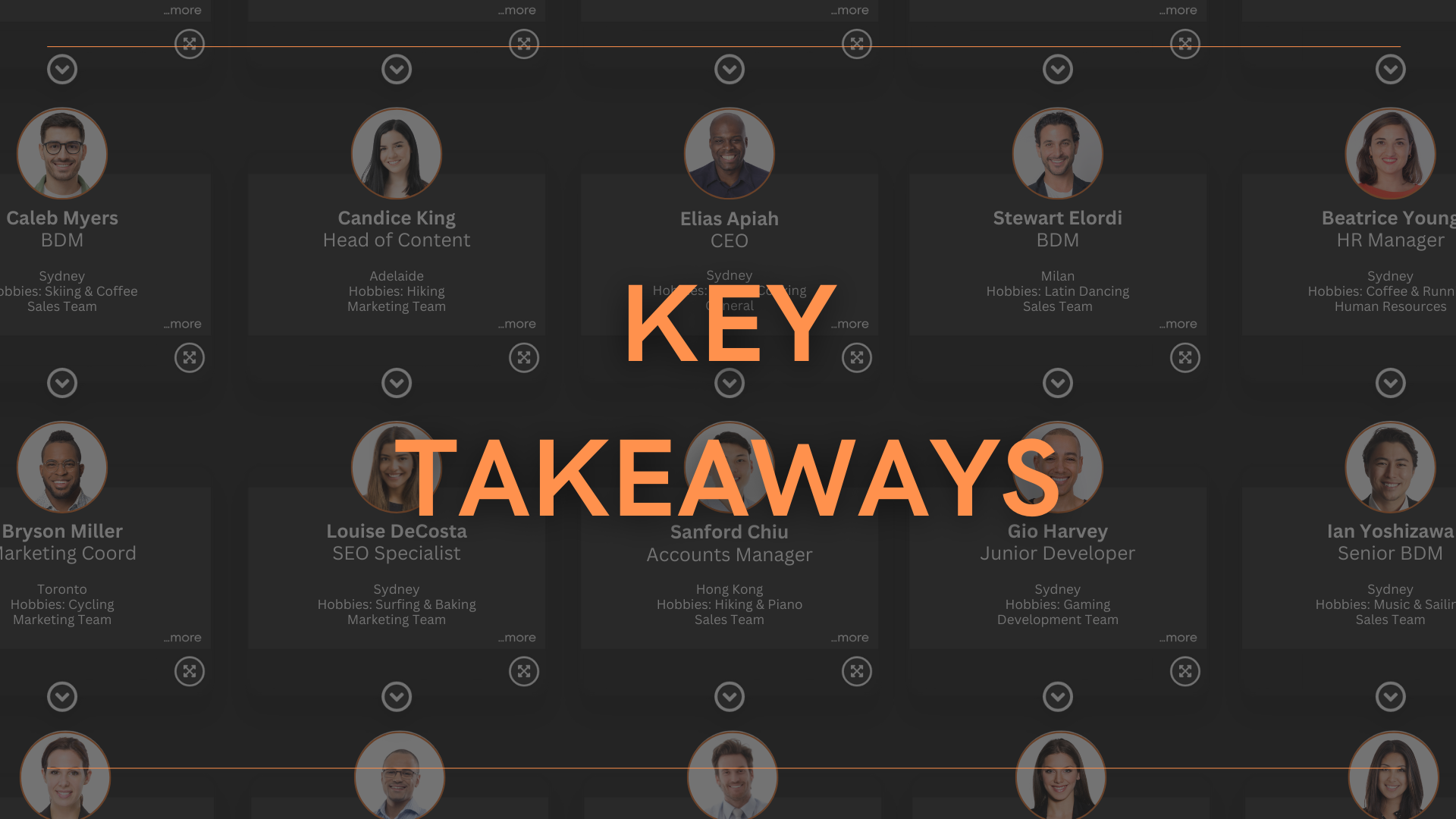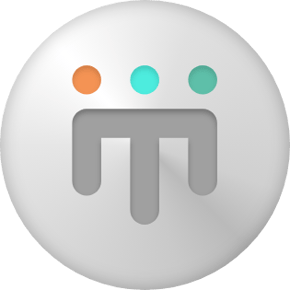Have you ever felt isolated from your team or experienced a moment of forgetfulness when it came to addressing a colleague? Don’t worry, we’ve all been there. It’s hard to fully grasp and be familiar with who’s who in the zoo when you’ve only met them once or twice – or worse, never met them in person at all.
However, we’re here to tell you that tools such as Organizational Charts can actually help you get to know your colleagues and in turn, feel more connected and comfortable about your place in the organisation (regardless of where you are based).
How? Well, with a visualisation of your organisational structure at your fingertips, you can put names to faces to foster a more personal connection, naturally improve name recollection, and quickly understand who to connect with for what. It’s an effortless way to foster more positive work relationships and facilitate an overall more binded workplace.
So, if you’re interested in learning more about why getting to know your colleagues is essential in feeling connected to your workplace and how Org Charts can make this process easier, then keep reading!
Why Is It Important To Get To Know Your Colleagues?

In organisations with hundreds of employees, it can be a real struggle to know and remember who everyone is. This gets even trickier when some folks work from home or in spaces based abroad. Without those regular face-to-face chats, it’s tough to keep tabs on who’s in charge of what and who’s in which department. And let’s face it, in large organisations, it’s simply impossible to meet and get to know everyone.
But here’s the thing: getting to know your colleagues (even if it’s just through understanding specific details about them), goes a long way in building strong work relationships, fostering that sense of connection, and making the overall work environment more positive and efficient. So, let’s dive into why this is a key ingredient for a thriving workplace.
1 – Demonstrates Respect & Recognition
Getting to know your team stems all the way back to the basics of simply remembering everyone’s names. Think back to a time when someone you only met once or twice remembered your name. Surely the encounter left a positive impression. In a workplace setting, it’s always nice to feel regarded as part of the team, and remembering who someone is serves as a fundamental way to show this respect and recognition. For example, if someone new is starting at your organisation, remembering their name instantly makes them feel welcomed and included in (what can often be) an anxiety-inducing situation. It’s a small yet powerful gesture that can lay the foundation for stronger and more meaningful connections in the workplace.
2 – Fosters A Positive Work Environment
Picture your workplace as a friendly, supportive community where everyone knows each other. That’s the kind of environment that getting to know your colleagues helps create. When we consistently remember and communicate with our colleagues’ with a pre-existing understanding of their roles and duties, it fosters a strong sense of inclusivity and belonging, making individuals feel like valued members of a cohesive team. This practice goes a long way in reducing workplace anxiety, especially for newcomers or employees placed in unfamiliar situations. Plus, it enhances the efficiency of communication, leading to better teamwork and collaboration for everyone. So, getting to know your team members isn’t just a polite gesture; it’s like adding a spoonful of productivity and connection to your organisational culture.
3 – Builds Trust & Rapport
Imagine walking into a meeting and having someone greet you by your name. It instantly puts you at ease, right? That’s because remembering and using names is a powerful trust-building tool. When we consistently use each other’s names at work, we naturally build a bridge of trust and rapport. People tend to trust and connect more with those who remember their names because it shows that you’re paying attention, that you care, and that you see them as unique individuals – not just another resource in the organisation. This helps form the foundation for strong professional relationships, making teamwork smoother, collaboration more effective, and the workplace an all-around more pleasant and productive space to be in.
4 – Minimises Misunderstandings
Clear and effective communication is a crucial component of any successful workplace and getting to know your teammates plays a key role in reducing misunderstandings. How? Well, when we forget someone’s name or position, it can lead to awkward moments or even mix-ups in who to contact for what. Imagine calling a coworker by the wrong name during an important meeting or allocating a task to the wrong employee – yikes! Understanding other employees helps us steer clear of these unsettling and ineffective situations. It ensures that we’re on the same page, addressing the right people, and fostering a workplace where everyone feels heard and respected. So, by making sure we familiarise ourselves with who we are working with, we can keep misunderstandings at bay, making work interactions smoother and more harmonious.
How Do Org Charts Help You Stay Connected With Your Team?

1 – See Who’s Who In The Zoo & Reinforce Your Memory
Org Charts are valuable tools for enhancing your ability to understand your teammates and stay connected within the workplace. These charts offer a clear visual representation of your how your organisation is structured, showcasing the relationships between roles, departments, and individuals, from the top-level CEO to entry-level employees. By accessing your Org Chart, you can quickly identify who’s who in the zoo and know who to go to for certain tasks. And chances are, by repeatedly referring to your chart, you will naturally create visual associations with specific roles and positions which will act as a memory anchor. So, for instance, when you encounter a colleague whose name eludes you, simply recalling an element from the Org Chart can act as a powerful memory trigger, facilitating easier informational retrieval during video, phone, or face-to-face interactions.
2 – Put A Name To The Face
One of the standout benefits of an Org Chart is that it provides, not just names and positions, but also faces. This feature is especially beneficial for employees working in flexible and large organisations where the chances of meeting and interacting with everyone on a day-to-day basis are low. By referring to your Org Chart, you can actually see what the employees that make up your organisation look like and be able to more strongly associate them with their respective positions. This helps you remember colleagues as individuals rather than just names, making workplace interactions more personable and fostering a more trusting environment for everyone. Believe us when we say that putting a name to the face really does create a more inclusive atmosphere that makes employees feel like part of the bigger picture, comfortable with their teammates, and keeping that isolation to a minimum.
3 – Capture More Than Just Position Information & Reporting Lines
With some Org Chart builders such as Martian Logic, you have the advantage of complete and flexible customisation of the information contained within your Organizational Chart. This level of customisation extends far beyond just listing employee names and position titles. Instead, it lets you create custom forms and infuse your Org Chart with more personalised details such as nicknames, name pronunciation, hobbies, and whatever else you wish to hold about your employees. This plays a pivotal role in adding that relatable aspect, as it transforms coworkers from mere names on a list into multifaceted individuals with diverse interests and backgrounds. With an Org Chart in place, employees will always be able to see where they fit in, feel connected to their teams, and know who to contact for their respective needs.
Key Takeaways

Getting to know your colleagues is a powerful practice that can improve your work relationships and keep you feeling connected to your team. We understand that this can prove difficult, especially in large organisations with teams made up of thousands of people. However, to help make this process easier, Org Charts offer a solution.
By having a visual representation of your organisation’s structure at your fingertips, you can easily associate names with positions, faces, and unique employee details, and refer to this resource whenever you need. Using these Org Charts will enhance information retrieval and create a more inclusive and connected work environment for all.
If you’re looking for a place to start, platforms such as Martian Logic offer flexible Org Chart solutions that are easy and quick to use. So, get ready to leverage this resource and experience the power of a well-connected workplace!

